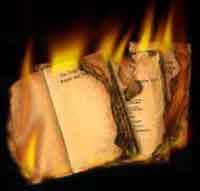
by Shane Galvin
Authority and power were large parts of the Cultural Revolution. Adults and Mao’s Red Army alike were taught to respect the authority of the government and never doubt Mao’s decisions. For some of the youths being re-educated however, a banishment of intellectualism was hard to agree with. Even in the most rural parts of China during re-education, authority was still a primary aspect of everyday life. The irony in banishing intellectualism is that other appointed authority figures will not have access to education, and will only be as smart as the uneducated people they have domain over. The Headman on the Mountain of the Phoenix is drives the villagers to work hard everyday, and that seems to be all he knows. He eventually expresses interest in a life filled with just labor, which is shown by embracing the art of story telling. The Headman on the mountain of the Phoenix represents a more localized and direct force on the villagers lives. However, it can be seen that he does not enforce rules as strictly as would be assumed by an outsider.
When two city youths arrive at the Headman’s mountain for re-education, they immediately have an encounter with the Headman involving a violin one of the boys had brought with him. The other villagers considered the violin a toy, and toys were not allowed on the mountain. Western music was also something banned during this time period. However, through some charismatic conversation and a few quick bending of truths, the boy to whom the violin belonged was able to serenade the villagers on the night of his arrival. The boy tells the Headman that the name of the song he is about to play is entitled “Mozart is thinking of Chairman Mao”. In believing the boy, the Headman shows ignorance and naivety of the outside world. It also shows he may be fearful to deny something that praises Mao.
Great pictures.
ReplyDelete-Peter Ball